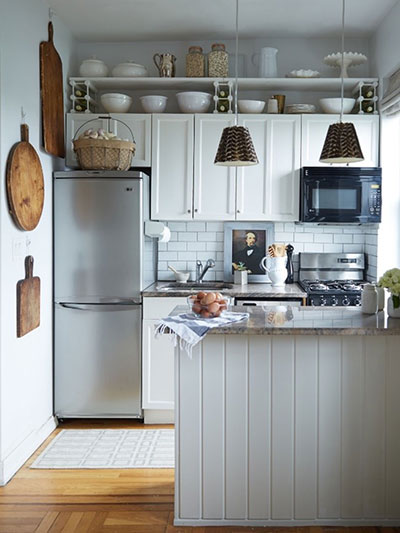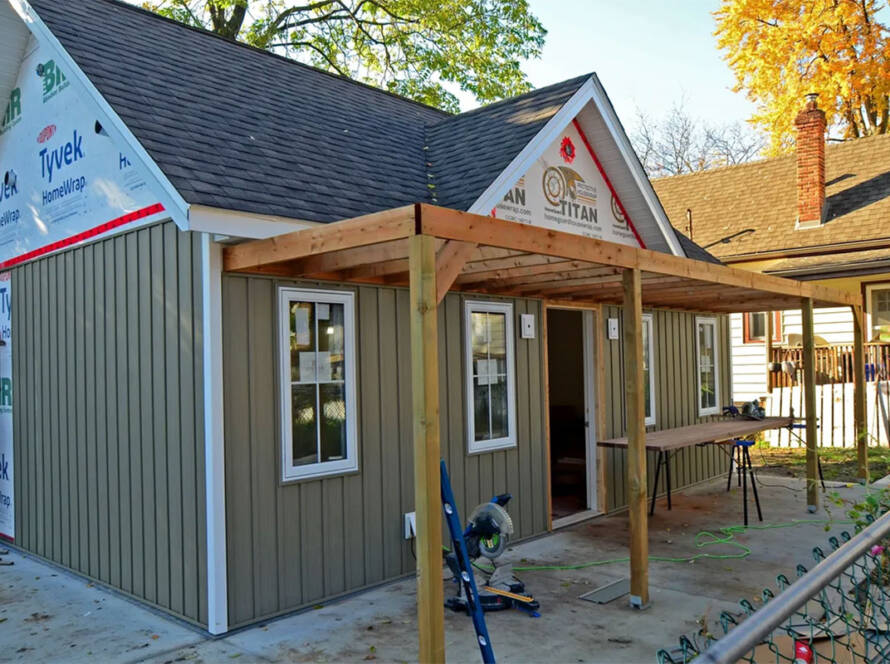One of the most common challenges faced by people living in tiny homes, whether in rural Ontario or in urban laneway homes, is figuring out how to cook effectively in a small kitchen. With limited counter space, minimal cabinetry, and compact appliances, meal preparation might seem difficult at first. But with thoughtful planning and a few space-saving strategies, even the smallest kitchen in a petite home or additional dwelling unit can be transformed into a highly efficient and functional cooking space.
Cooking in a tiny house starts with embracing a minimalist mindset—not one that sacrifices your enjoyment of food, but one that invites you to be intentional about the tools and ingredients you keep. In small homes, every item must justify its presence. Begin by evaluating your kitchen tools and gadgets. You likely don’t need multiple mixing bowls, several spatulas, or an array of single-use appliances. Instead, focus on high-quality, multipurpose tools. A solid chef’s knife that can handle slicing, dicing, and carving, or a versatile cast-iron skillet that works on both the stove and in the oven, can replace a variety of other less efficient items. These types of smart choices are key in tiny homes Ontario residents are increasingly choosing for their affordability and sustainable footprint.
To maximize space in your laneway suite or tiny house Ontario kitchen, look up—vertical space is incredibly valuable. Open shelving offers storage for everyday dishes or pantry items while keeping them easily accessible. Wall-mounted magnetic strips are ideal for knives and metal tools, and racks can hold everything from cooking utensils to spice jars. Hooks installed beneath shelves can support mugs, ladles, or dish towels, while pegboards add flexibility by allowing you to move things around as your needs evolve. This not only frees up counter space but also transforms your storage into a clean, attractive visual display.
When every inch counts, collapsible and stackable kitchenware becomes indispensable. Collapsible colanders, foldable dish racks, and nesting bowls take up far less space when not in use, which is essential in small homes or laneway houses where drawer and cabinet space is limited. Installing a cutting board that slides over the sink is another practical upgrade—it instantly expands your prep area without requiring a permanent footprint. These kitchen hacks are commonly embraced by tiny home builders in Ontario, who understand the importance of functionality in limited square footage.
 Choosing the right appliances for your petite home kitchen is another essential element. Opt for multifunctional appliances that save both space and time. An Instant Pot, for example, can replace several kitchen gadgets by functioning as a pressure cooker, rice cooker, slow cooker, and more. A compact toaster oven that can bake, toast, and air-fry could eliminate the need for a full-sized oven entirely. Before bringing any appliance into your kitchen, ask yourself whether it serves more than one purpose and aligns with how you actually cook. This approach is especially useful for those living in additional dwelling units or small homes where space must be earned, not assumed.
Choosing the right appliances for your petite home kitchen is another essential element. Opt for multifunctional appliances that save both space and time. An Instant Pot, for example, can replace several kitchen gadgets by functioning as a pressure cooker, rice cooker, slow cooker, and more. A compact toaster oven that can bake, toast, and air-fry could eliminate the need for a full-sized oven entirely. Before bringing any appliance into your kitchen, ask yourself whether it serves more than one purpose and aligns with how you actually cook. This approach is especially useful for those living in additional dwelling units or small homes where space must be earned, not assumed.
Effective pantry and food storage is another area where organization matters. Use clear, labeled containers for dry goods, which not only helps with visibility and inventory control but also prevents overbuying. Slim pull-out shelves, hanging baskets, and using the insides of cabinet doors for storage can help you utilize awkward corners and narrow spaces. Layering items by stacking, hanging, or sliding them allows you to multiply your usable storage space in a way that feels both efficient and tidy.
Cooking in a tiny home kitchen also requires a shift in how you approach meal prep. Simplifying your workflow, prepping ingredients ahead of time, and cleaning as you go will help reduce the stress of juggling tasks in a compact space. Even in the smallest of tiny homes or laneway suites, creating designated zones for chopping, mixing, and cooking—however minimal they may be—helps bring order and flow to your routine.
Ultimately, your kitchen should reflect how you live. If you don’t bake often, don’t waste storage space on baking tools. If one-pot meals are your go-to, then invest in a quality pot and the essential spices that bring your favorite dishes to life. Tiny home living invites you to know yourself better, and your kitchen should reflect that self-awareness and clarity.
Cooking in a tiny house or laneway home doesn’t mean giving up good food or convenience. On the contrary, it challenges you to be creative and resourceful, transforming limitations into strengths. With the right layout, intentional tools, and smart storage solutions, your tiny home kitchen can serve up big flavor and functionality—no matter how small the square footage.



